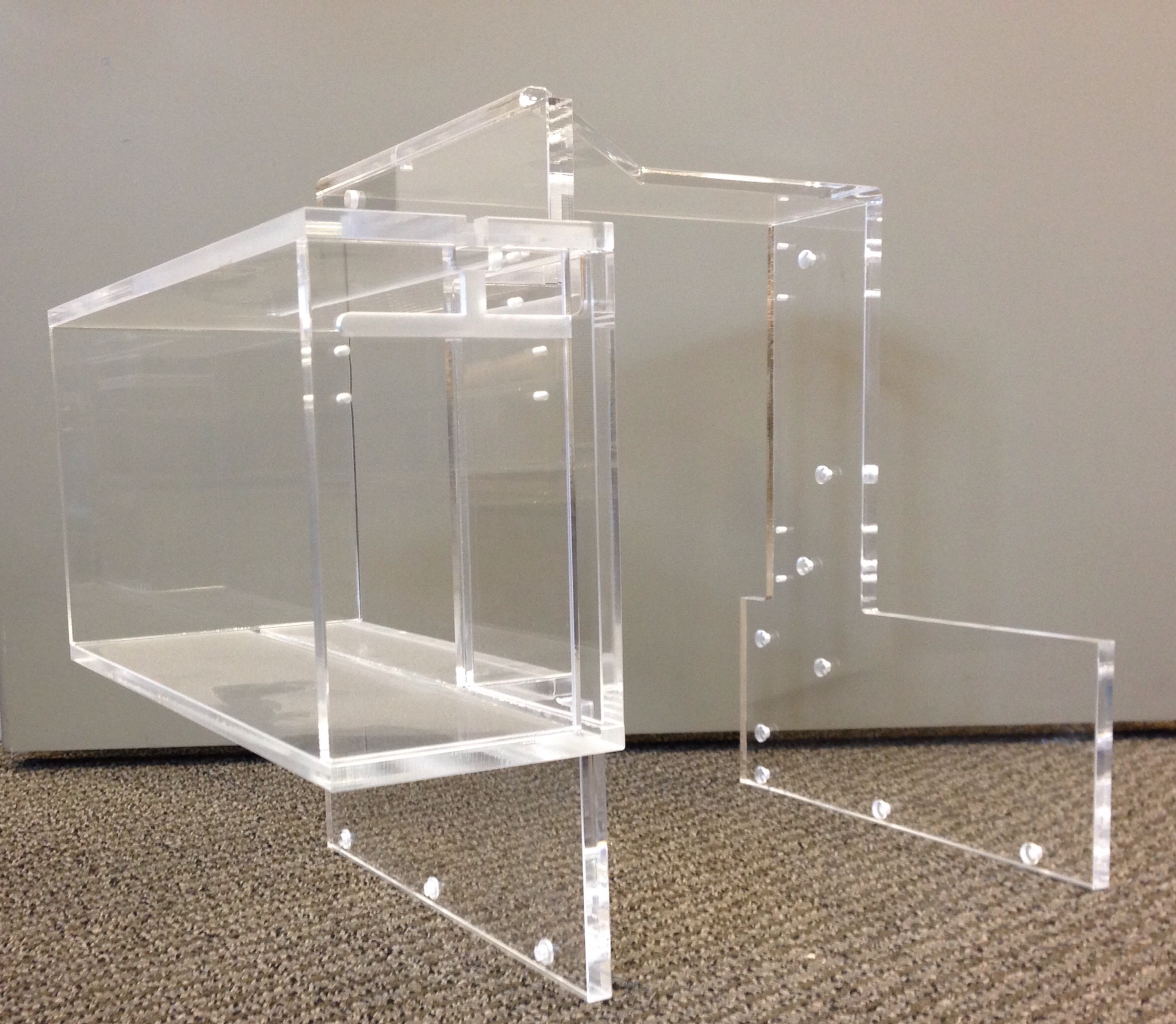So why even decide to fabricate plastic materials? For starters, plastic production usually has the benefit of having relatively quick finish times, and unlike most materials there is also the choice of colouring plastic prior to manufacturing, as opposed to after. It’s high malleability is the reason why it possesses a reasonably low melting temperature, and it’s far more light and portable compared to many other materials – both these elements simplify the manufacturing process. In addition, plastic materials are comparatively inert and thus have higher chemical resistance. Despite all of these positive aspects, plastic is however not suitable for applications which require a high structural integrity, and is very susceptible to damage in the long-term.
CNC Machining
CNC machining is a computer operated subtractive process, which eliminates material from plastic in order to build the required form. The computer is high-tech, with the capability to convert a model into numbers using a computer aided design software system. The numbers are competent to control the machine to cut the desired shape. To operate, the machines require an intermediate step in the creation and validation of tool paths. When the machine receives the tool paths, the subtractive procedure is initiated. When the assemblage is finished, the component is cleansed, smoothed, and trimmed.
For low quantity plastic component requests that demand tight tolerances and forms which are difficult to shape, machining meets your needs. CNC machining also offers low to medium initial costs, and can give top of the line plastic parts with limited finishing times. Yet, with an increase of product intricacy, the associated fee per component climbs up. Additionally, the method needs tool access considerations, and specific shapes, including those with spherical interior channels, are near-impossible to produce using CNC manufacturing. www.displaydevelopments.co.uk/bespoke-manufacturing is regarded as a site that has lots of up to date information on acrylic display fabrication. You’ll find thousands and thousands of websites with facts surrounding ‘perspex forming Uk’ this is actually among the finest websites perspex manufacturing. Everyone who is looking into additional information concerning plastic fabrications this particular web-site bespoke plastic trays contains a whole lot more useful guides in regards to machining of plastic parts.
Breakdown Of Vacuum Formation
Vacuum formation is a process during which plastic is heated up and moulded, ordinarily working with a mould. The scale and complexity of vacuum-forming machines range between affordable desktop technology to state-of-the-art production machinery.
It can be well suited for any venture, from made to order designs to large-scale manufacturing, taking into consideration the large array of equipment available and that also automation is undoubtedly an option when necessary. Nevertheless, there is little freedom in the types of shape it can produce, and is also unfortunately exclusively able to produce parts with simple geometries. In comparison to other techniques, tooling prices are low, given that vacuum formation merely requires minimal forces and pressures. Typically, for modest production sizes the moulds are constructed with 3D printed resin, or even plaster, and for greater production sizes more durable equipment made from metal is used.
The development process begins with a sheet of plastic material being clamped and heated up until the plastic becomes mouldable. The plastic is then placed into the mould and cooled off, and often fans and also other chilling strategies are utilised in order to speed up the cooling process. The final stage involves any surplus plastic being removed.

